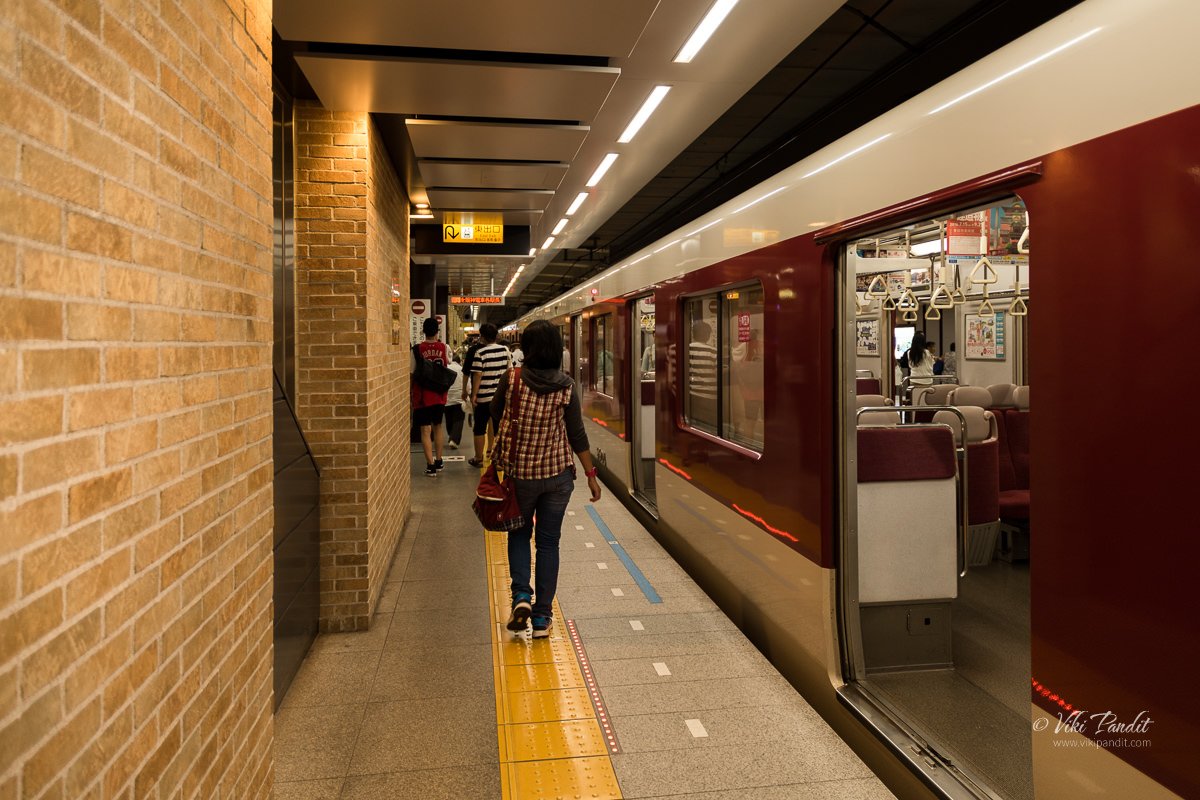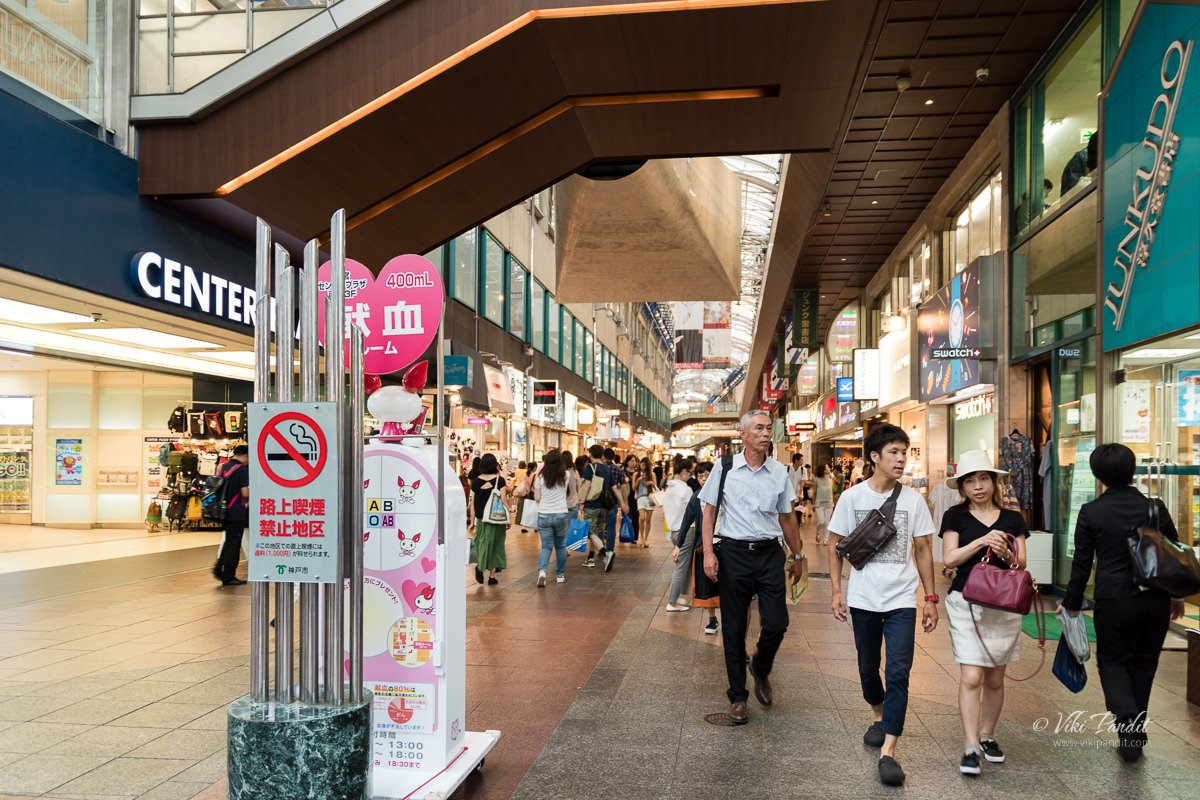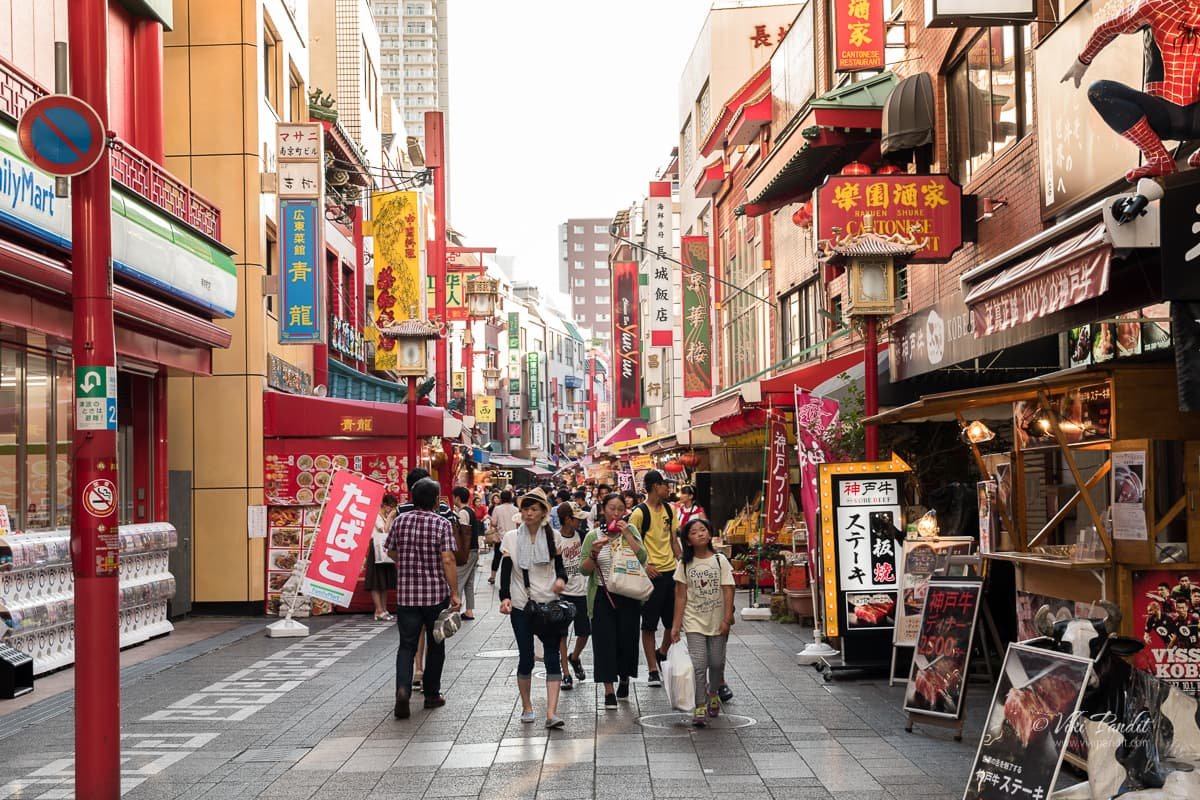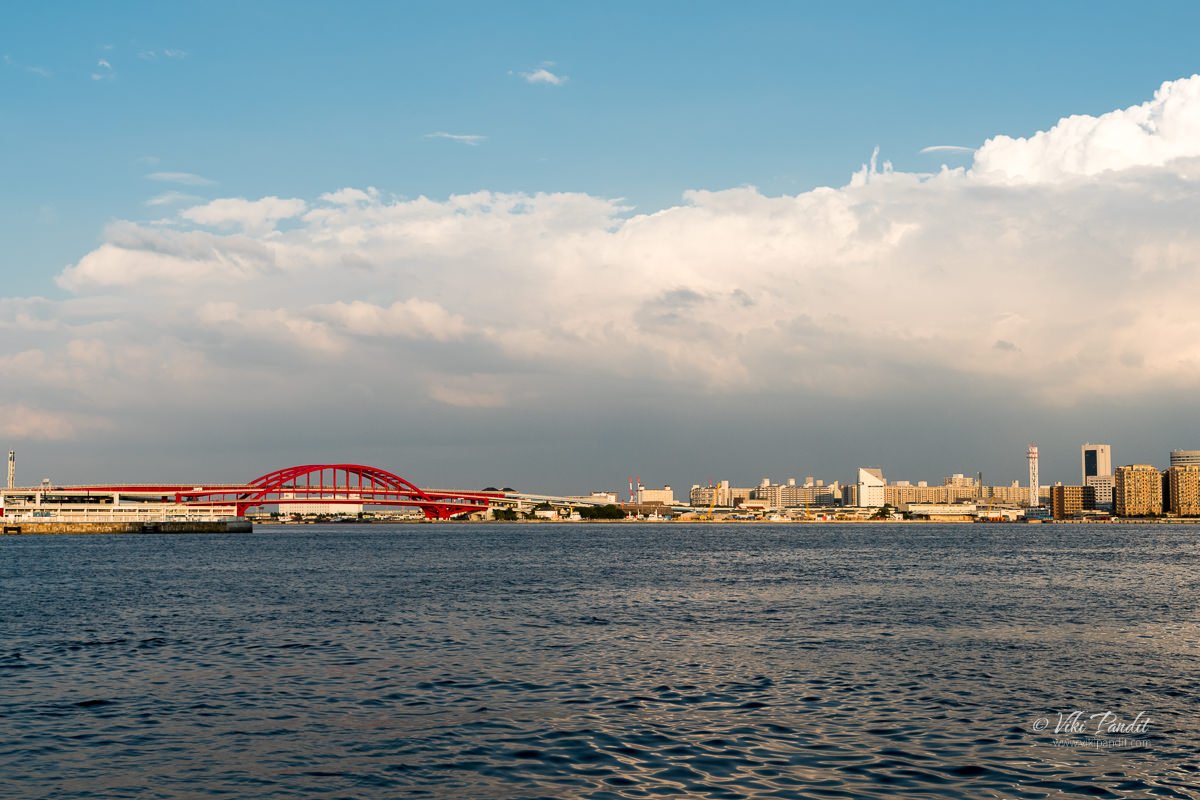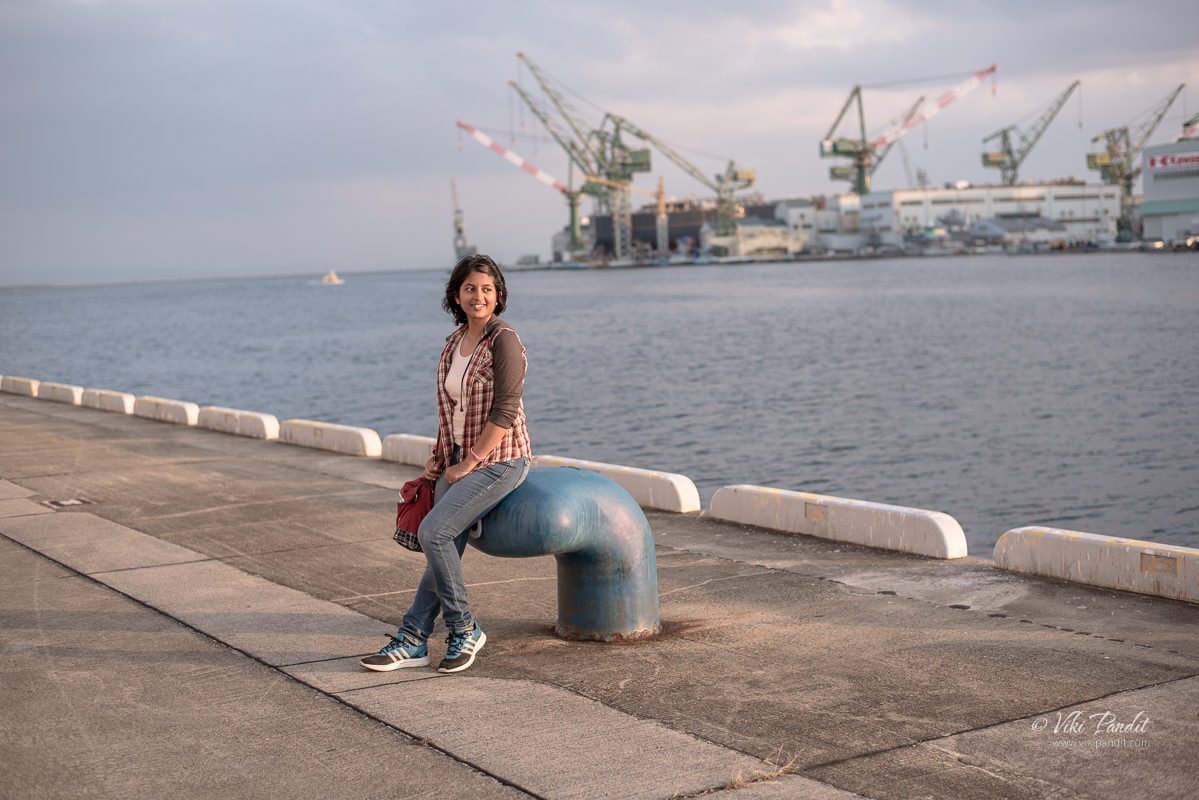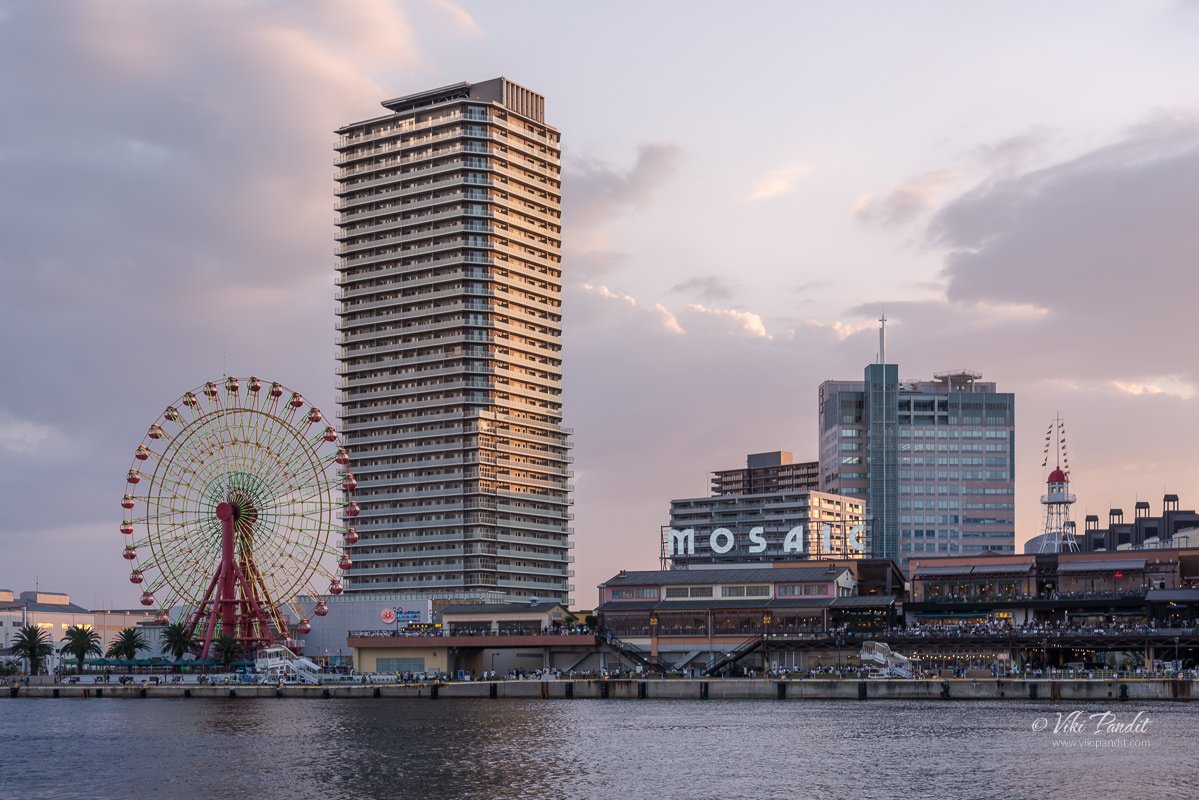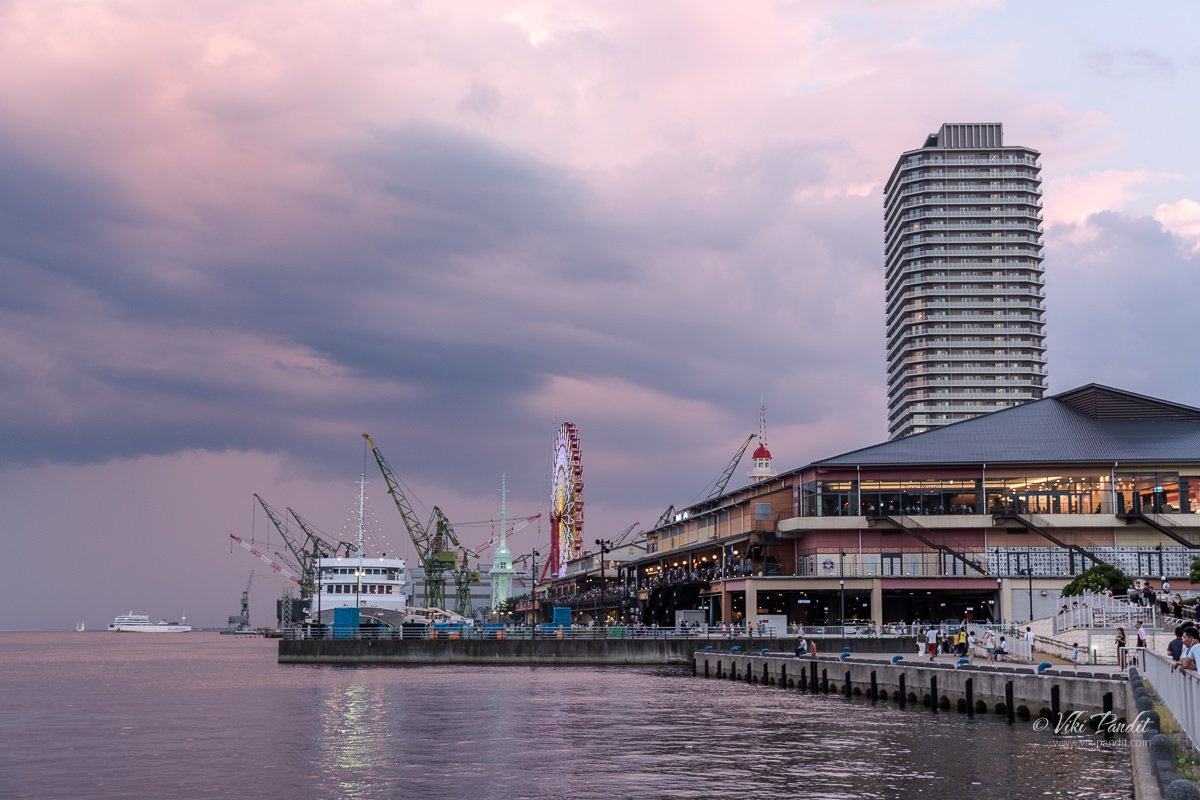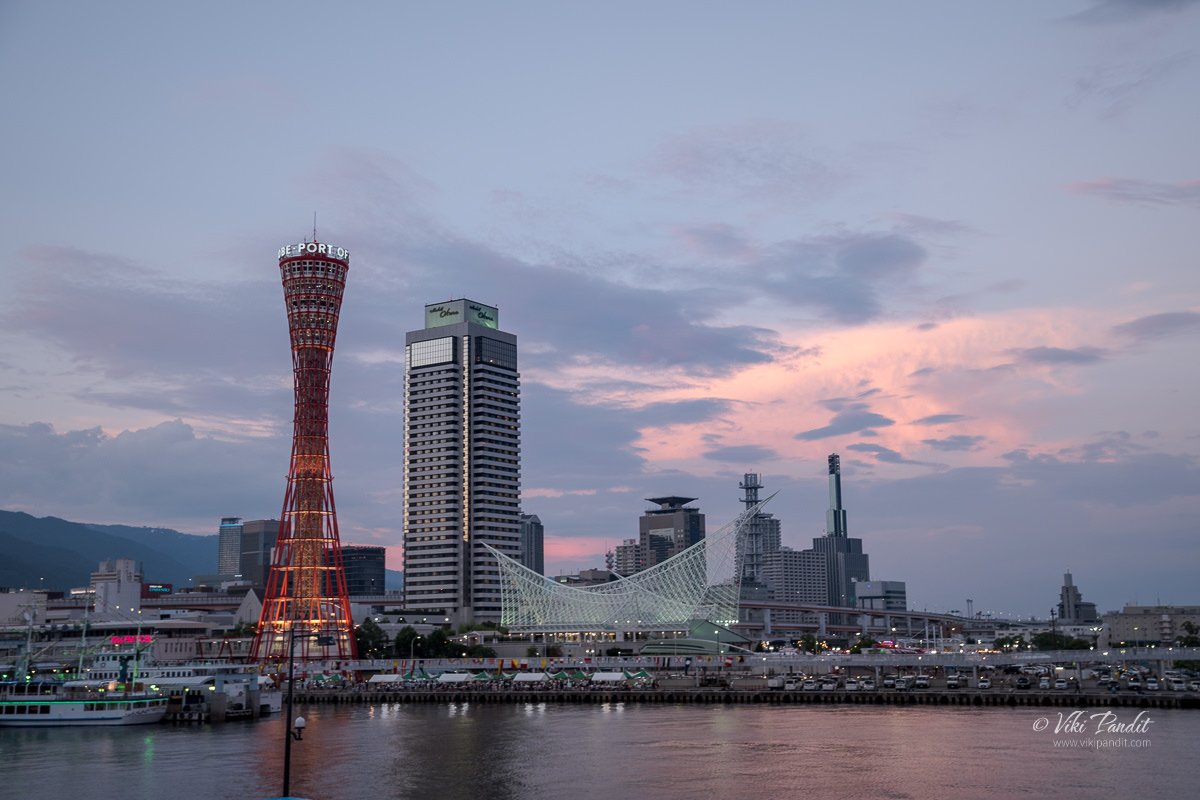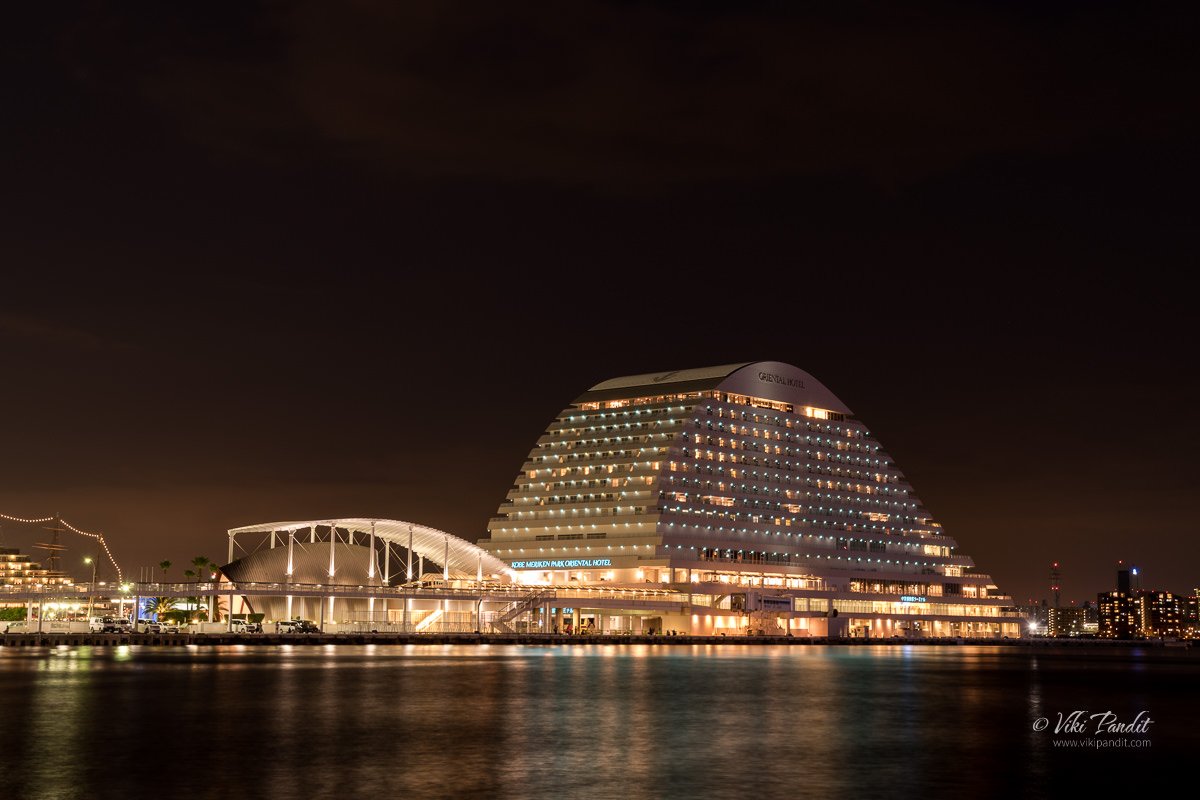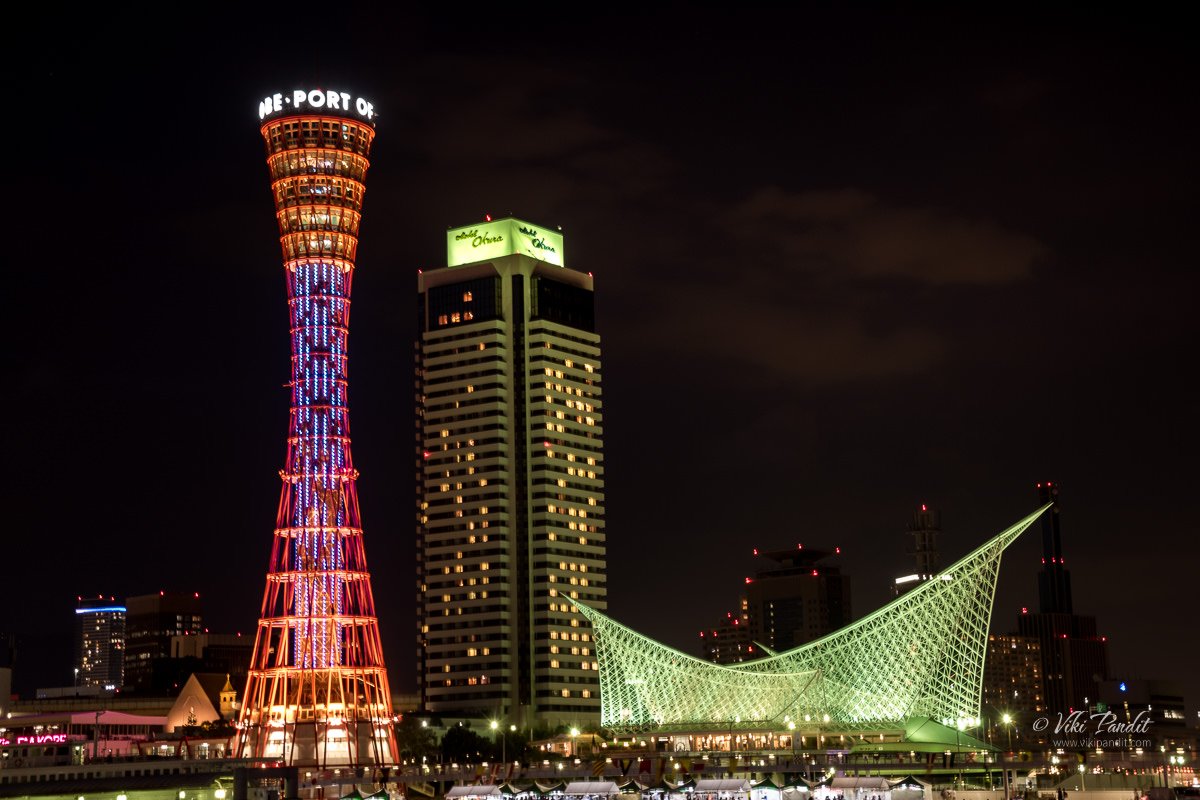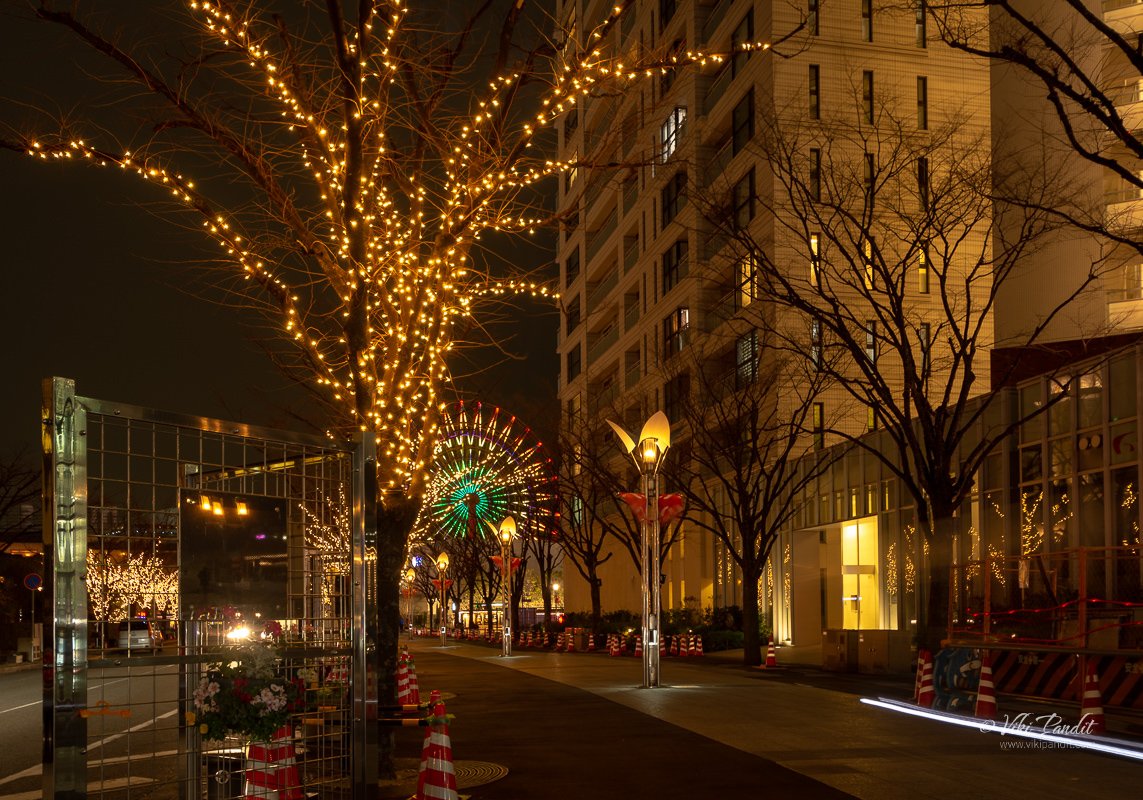Mani & I dropped in at Kobe in Hyōgo Prefecture today, to spend the evening at the stunning Harbor but we were pleasantly surprised by the Bon Odori festival happening on the same day!
We used the “Kansai Thru Pass” to travel to Kobe. The Kansai Pass, also called Surutto Pass, allows unlimited travel on most train lines in the Kansai area, barring the JR trains. You can also avail the JR Kansai Area Pass for the same. However, if you are touring mostly the Kansai area, the Surrutto Pass offers better value as it covers a denser network in the region’s most visited areas.
For visiting Kobe from Nara, it is preferable to travel via the Kintetsu line, since a direct train is available. On the JR line, one has to change a couple of trains in-between. The red and beige train with its big square windows was a great experience as we chugged along the beautiful Osaka countryside. We reached Kobe Sannomiya at about 3.30 pm.
The nearest train station to reach Kobe harbor is Kobe Sannomiya.
It was still too early so we wandered around the shopping area for a bit before heading out towards the Kobe Waterfront.
The Kobe Waterfront is about a 20-minute walk from the station. On the way, we passed the well-known Kobe Chinatown.
Nankinmachi
Nankinmachi is Kobe’s Chinatown and the center of the Kansai region’s Chinese community. It was originally developed in the 19th Century by Chinese merchants who settled near Kobe Port. Nankinmachi is now a popular shopping and dining district. There are shops, restaurants, and food stands selling popular Chinese foods like steamed buns and ramen. However, they are not genuinely Chinese dishes as they have been adapted to the taste of the Japanese to a big extent.
The port area is just a block away from Nankinmachi. As we neared the port area, we passed under the huge Hamate Bypass on the Kobe waterfront which was extensively damaged during the quake of 1995. It is another marvel of Japanese technology.
As we entered Merikane park, we were surprised by the presence of large crowds of Japanese in their lovely kimonos. It was only then that we realized that we had landed there right on the day of the Bon Odori festival in Kobe. The Bon Odori Festival in Kobe is one of the largest in the Kansai area. It features live performances of Japanese traditional folk songs with Kobe’s famous night view in the background.
Up ahead a high wooden scaffold had been constructed with red paper lanterns hanging from all sides. On the scaffold called Yagura, a group of girls were performing to the “Kawachi Ondo“. Many vendors had set up food stalls where you can enjoy delicious Kobe food.
Bon Odori ( 盆踊り) or simply known as the Bon dance, is a style of dancing performed during Obon, a festival lasting over a period of five days, welcoming the spirits of the dead. The style of the Bon dance varies from region to region.
In the Kansai region, the song goes like “Kawachi Ondo“. Around the platform, young couples in their colorful kimonos were dancing along with the performers in a circular ring around the yagura. The dance is also performed in a different way at times with people facing the yagura and moving towards and away from it in concentric circles.
I was fortunate to experience the dance in another variation while I was in Tokushima in Shikoku, very famous for its “Awa Odori” which simply proceeds in a straight line through the streets of the town.
The Bon dance tradition is said to have started in the later years of the Muromachi period (1333 – 1573) as public entertainment. Over the course of time, the original religious meaning has faded, and the dance has become associated more with summer festivities.
We enjoyed a couple of dances before moving towards the Kobe Tower. On the way, I caught a view of the Kobe Ohashi, Japan’s first double-deck arched steel bridge.
As we walked towards the Kobe Tower, the sun was starting to set behind the tall buildings. The lights on the tower were slowly being turned on. Far away on the other side of the pier, we could see Kawasaki Shipyard.
Kobe Marine Harbour Park
Across the peaceful waters of the bay, Kobe Harborland looked amazing with the big Ferris wheel. Kobe Harborland is a shopping and entertainment area along with the Kobe port that offers a selection of shops, restaurants, cafes, and other amusements, which, together with the romantic evening atmosphere, have made it a popular spot for couples and tourists alike.
As we went around the bay towards Harborland, we were stopped midway at the base of the Kobe Tower where a group of girls was ready to perform the Samba. Now, this was right out of the blue. Samba is not really what Japan is known for, and that’s what made this even more surprising for me. Performers, of all ages, in their colorful feathery attires, adorned with glittering beads were ready to daze the eager crowd.
They swayed to the sensual beat of Samba, heating up the evening at Meriken Park, and coloring it with many brilliant hues. Some from the gazing crowd joined in, stumbling awkwardly among the seasoned dancers.
The dancers were amazing. They put a lot of energy into it, and the costumes were truly astonishing. It was really something I never would have expected.
Once the dance got over, we moved on towards the pier across a pedestrian bridge and onto Kobe Harborland. The crowd was huge filling every inch of the array of department stores. This shopping area was built on the site of the former freight yard, Minatogawa Kamotsu Station of the Japanese National Railways. The yard was removed in 1982 and the shopping district opened in October 1992 as a cultural hub.
The cafe area was even more crowded. The evening was set up for the many events planned for the evening. People had taken up seats along a promenade for further events in the evening. A cruise ship was parked nearby. Across the bay, I could see the Kobe Tower and Maritime Museum along with the tall buildings. This cityscape from this side of the harbor is very popular among photographers and the reason why I was here too.
We hurriedly crossed by the shopping area and reached the giant Ferris wheel. Honestly, I was glad to come out of the heavy crowd into some kind of peaceful sanity. Some guys were fishing along the pier. The Kobe harbor looked amazing from here. I set up my tripod and took some shots of the Kobe skyline. Kobe also has one of the most beautiful skylines at night
Kobe skyline at Evening
Kobe was one of the world’s busiest ports prior to the earthquake, In the 1970s the port boasted of handling the most containers in the world. It is said that it was one of the world’s busiest container ports from 1973 to 1978. The 1995 Hanshin earthquake diminished much of the port city’s prominence when it destroyed most of the facilities here, causing immense damage. Over 6,000 people died in the quake, which also left a $100 million trial of damage. Despite the repair and rebuilding, it has never regained its former status as Japan’s principal shipping port.
As dusk set in the cruise ship stationed nearby started on its run. This luxury pleasure boat offers a 40-minute cruise where one can savor the scenic attractions of the Kobe seaside along with the Akashi Kaikyo Bridge.
Kobe Meriken Park Oriental Hotel at night
The Oriental is an upscale hotel resembling a luxury liner and one of the iconic structures in the Kobe skyline. It was opened in June 1995. From the looks of it, one can make out it’s a plush hotel.
We stayed around till the sunset and the sky turned pitch black. Far away on the hills behind the city, numerous lights were illuminated. The dancing and feasting went on late into the evening.
By 8 pm I had got the shots I came for. I packed my gear and we started our walk back towards the Sannomiya station.
On the way back, we went past the dazzling Kobe Tower. The sightseeing tower was completed in 1963. The first floor is leased out to souvenir shops and restaurants. The ticket office to the sightseeing level is locating on the second floor. The third floor is a 360 rotate cafe with 20 minutes for a single round. I don’t think we even tried getting inside looking at the surrounding crowds.
Near the Maritime museum, the Bon Odori festival was still going on. We stayed around for a dance. The crowd was dancing in concentric circles around the Yagura.
At around 9 pm we bid adieu to the beautiful harbor and walked back to Sannomiya station. The streets were much quieter as we made our way out of the Harbor. The route took us along Gaslight street, a beautiful sight when on an evening outing. It’s called gaslight street because the street is decorated with old-fashioned gas street lights and electric lamps.
The trees and lights enhance the avenue and surrounding buildings, which makes Gaslight Street a little-known but memorable spot for taking pictures.
Kobe harbor is a happening place to spend quality time. It is surprising how people here are able to get over the tragedies brought on by earthquakes. Maybe it’s just inbuilt. After the devastating quake of 1995, it is commendable to see them getting back to living their lives and having fun. I came to Kobe just to catch the stunning Kobe harbor but I am going back with some special memories of the Bon Odori festivities.
Thanks for reading. Please leave me a comment if you liked the post or follow my story as I visit the thrilling cliffs of Tojinbo.
